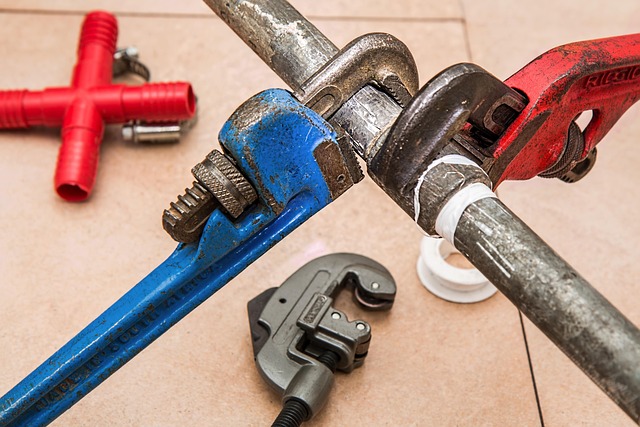Residential foundation repair is vital for home maintenance, addressing issues like settling, lateral movement, and water intrusion. Early detection of cracks or structural damage is key, as prompt action using methods like underpinning, piering, or wall anchors prevents further deterioration. Soil analysis is crucial for identifying potential problems and choosing the best reinforcement methods. Effective techniques include steel reinforcement, pile driving, and underpinning. Cost-effective solutions like foundation retrofitting and underpinning, along with modern materials, offer durable and economical options. Case studies demonstrate successful repairs for various challenges, from poor soil conditions to historical building preservation. Regular inspection, moisture control, and structural repairs are proactive measures. Adhering to local regulations and obtaining permits is essential before starting any repair or reinforcement project.
Home foundations are the unsung heroes of your property, bearing the brunt of external forces and ensuring structural integrity. However, over time, various factors can compromise their stability, leading to costly repairs. This article delves into the world of residential foundation repair, covering common issues, signs requiring reinforcement, soil’s role in stability, and effective techniques. From cost-efficient solutions to local regulations, we provide a comprehensive guide to help homeowners understand and maintain their home’s foundational strength.
Understanding Residential Foundation Repair: Common Issues and Their Impact

Residential foundation repair is a crucial aspect of maintaining a home’s structural integrity and longevity. Understanding common issues that can arise is essential for homeowners to recognize potential problems early on. One of the most frequent challenges involves settling, where the ground beneath the house compacts or settles unevenly, leading to cracks in the foundation walls, floors, or ceilings. This issue often occurs due to poor soil conditions, inadequate soil preparation during construction, or variations in moisture levels.
Another prevalent problem is lateral movement, caused by factors like expansive clay soils, tree roots, or groundwater. These forces can cause foundations to shift horizontally, resulting in cracks and misalignments in the structure. Water intrusion is also a significant concern, as it can weaken the foundation by causing corrosion of steel elements and eroding support beams. Prompt addressing of these issues through residential foundation repair methods like underpinning, piering, or wall anchors is vital to prevent further damage and ensure the safety and stability of the home.
When to Know If Your Home's Foundation Needs Reinforcement

If your home is experiencing signs of structural damage, like cracks in walls or floors, uneven doors or windows, or noticeable dips or raised areas in the flooring, it might indicate a problem with your foundation. These issues could be symptoms of settlement, heave, or other types of foundation movement, all of which can require reinforcement to prevent further deterioration. Regular home inspections are crucial in identifying these problems early on, as they allow for timely intervention and mitigate the need for more extensive—and expensive—residential foundation repair later on.
Foundation reinforcement is particularly necessary if your home was built on loose soil or in an area prone to extreme weather conditions like heavy rainfall, earthquakes, or strong winds, which can exacerbate foundation issues. Settling soil, expansive clay, and other geological factors can contribute to significant foundation problems over time. Recognizing the signs of strain on your home’s structure and understanding when to seek professional assistance for residential foundation repair is essential for maintaining a safe and stable living environment.
The Role of Soil Conditions in Foundation Stability

The stability and integrity of a residential foundation heavily rely on the underlying soil conditions. Different types of soil have varying capacities to support structures, making it crucial to understand their behavior before and during construction. Loose or poorly compacted soils can lead to significant challenges in foundation reinforcement for homes. Such soils may settle or shift over time, causing structural damage and requiring costly residential foundation repair solutions.
On the other hand, dense and stable soil provides a solid base, ensuring the foundation’s longevity. Soil analysis is an essential step in assessing potential issues and guiding appropriate foundation reinforcement methods. By evaluating factors like soil compaction, water content, and overall stability, professionals can make informed decisions to fortify homes against future problems, thereby preventing extensive and expensive repairs.
Techniques for Foundation Reinforcement: A Comprehensive Overview

When it comes to reinforcing a home’s foundation, there are several techniques that can be employed to ensure structural integrity and longevity. One common method is steel reinforcement, where high-strength steel bars or mesh are integrated into the concrete during construction or as a retrofit. This technique significantly increases the load-bearing capacity of the foundation walls, making them more resistant to shifting soils and other environmental factors that could cause damage.
Another effective approach is the use of pile driving, which involves installing vertical piles deep into the ground to support the foundation. This method is particularly useful for homes built on soft or unstable soil. Additionally, underpinning is a process where new footings are installed below the existing foundation to provide additional support and stabilize the structure. For residential foundation repair, these techniques offer durable solutions that can prevent future issues and protect the investment of homeowners.
Cost-Effective Solutions for Strengthening Your Home's Foundation

When considering cost-effective solutions for strengthening your home’s foundation, it’s crucial to explore various options that balance effectiveness and affordability. One such approach is the use of foundation retrofitting techniques, which involve installing steel brackets or beams to stabilize existing walls and floors. This method not only enhances structural integrity but also prevents further damage, making it a popular choice among homeowners looking for budget-friendly solutions.
Another cost-effective strategy is underpinning, a process where new supports are added below the foundation to distribute weight more evenly. Unlike complete foundation replacement, underpinning is less invasive and significantly more economical. Additionally, using modern materials like polymeric underlayments can provide enhanced stability without breaking the bank. By opting for these methods, homeowners can effectively mitigate issues related to residential foundation repair while maintaining a healthy budget.
Case Studies: Successful Foundation Repair Projects

In the realm of residential foundation repair, case studies offer invaluable insights into successful projects that have addressed various challenges. One notable example involves a home experiencing severe cracks and uneven floors due to poor soil conditions and aging infrastructure. The solution entailed a comprehensive approach, including underpinning techniques, where additional support beams were installed beneath the existing foundation. This method not only stabilized the structure but also prevented further damage.
Another successful project focused on a historical residence with a unique architectural design, presenting challenges in maintaining structural integrity while preserving its aesthetic appeal. Experts employed advanced mechanical anchors and carbon fiber wrapping to reinforce the foundation without compromising the building’s original charm. These case studies demonstrate that with the right expertise and techniques, even seemingly complex residential foundation repair projects can yield remarkable results, ensuring homes remain safe, stable, and structurally sound for years to come.
Maintaining a Strong Foundation: Long-Term Care and Prevention Tips

A strong foundation is the backbone of any residential property, and maintaining it is crucial for long-term stability and safety. Regular inspection and proactive care are essential to prevent issues that may lead to costly Residential Foundation Repair. One of the primary steps is addressing any signs of cracks or uneven settling promptly. Even minor discrepancies can indicate underlying problems, especially in regions prone to extreme weather conditions or soil shifts.
Regular maintenance includes deep cleaning and inspection routines to ensure the foundation’s integrity. Moisture control is vital; seepage and water damage can compromise the structure over time. Using waterproof barriers and proper drainage systems around the perimeter of the building can prevent these issues. Additionally, supporting the foundation with anchor bolts or structural repairs can mitigate potential shifts, ensuring your home remains secure for years to come.
Local Regulations and Permits: What You Need to Know Before You Start

Before beginning any residential foundation repair or reinforcement project, it’s crucial to understand and comply with local regulations and permit requirements. Each municipality has its own set of rules and guidelines governing construction and structural modifications, especially for older homes. These regulations are in place to ensure safety, maintain neighborhood standards, and prevent potential hazards.
Researching and obtaining the necessary permits is a vital step in the process. Check with your local building department or city hall to learn about specific requirements for foundation reinforcement work. Permits may be needed for structural alterations, especially if the project involves adding or removing substantial parts of the foundation or changing the load-bearing capacity of the structure. Understanding these regulations will help ensure a smooth and legal construction process for your residential foundation repair.
